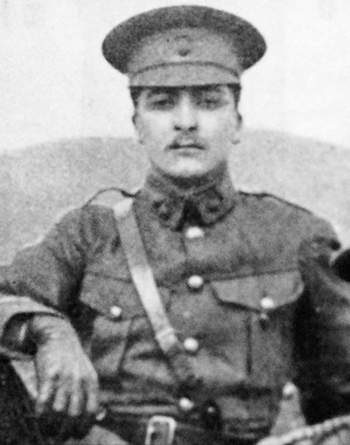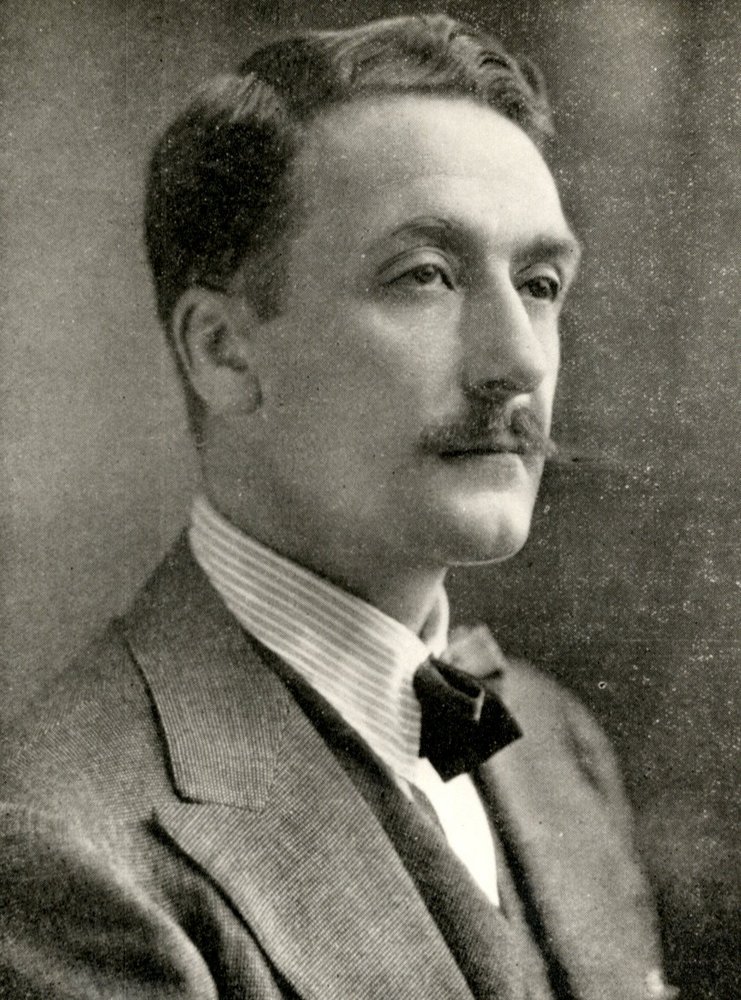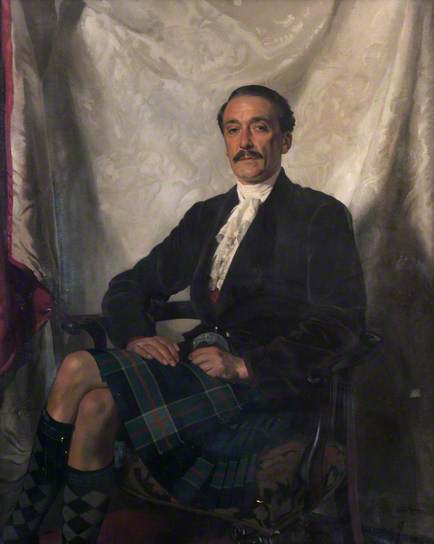ONE of the most colourful characters of his generation was Sir Iain Colquhoun of Luss, 32nd Chieftain of the Clan and the 7th Baronet.
Sir Iain gave a lifetime of service to his country, his county and his clan, and was clearly an inspirational figure.
He was born on June 20 1887, the son of the 6th Baronet, Sir Alan John Colquhoun, and his wife, and he succeeded his father as 7th Baronet in 1910.
He chose the army as a career and was commissioned in the 1st Battalion of the Scots Guards.
Popular with his men, he won the British Army Lightweight boxing championship and served on the Western Front in World War One. He is said to have even kept a fairly tame pet lion in the trenches.
He had a distinguished career, being both wounded and awarded the Distinguished Service Order and bar, and mentioned in despatches for bravery.
However his singular claim to wartime fame was that he was court martialed for a very unusual offence — “Conduct to the prejudice of good order of military discipline in that on 25th December 1915 he (1) Approved of a truce with the enemy (2) Permitted a cessation of hostilities”.
This was not the famous and much written about Christmas truce of December 1914, but that event did have bearing on what happened to Sir Iain.
He and his immediate superior Captain Miles Barne took part in what was effectively a 1915 Christmas Day truce so that the Germans could collect and bury their dead. It lasted less than an hour.
General Lord Cavan, who commanded the Division in which the Scots Guards were serving, did not consider this a humane and correct thing to do.
They did it despite strict orders from the High Command that there was to be no repetition of the 1914 truce.
To try to ensure that the order was obeyed the High Command ordered the artillery and the machine gunners to fire off salvoes every few hours over the Christmas period including Christmas Eve and Day.
 So the two Captains faced a court martial and were judged by their fellow officers.
So the two Captains faced a court martial and were judged by their fellow officers.
Sir Iain had as his defence counsel — or Prisoner’s Friend as they were known — fellow front line officer Raymond Asquith, the son of Prime Minister Herbert Asquith, whose niece, Dinah Tennent, had become Sir Iain’s wife on February 10 1915.
According to an account in the excellent ‘The Vale of Leven’ historical website, www.valeofleven.org.uk, Asquith was unimpressed by the military hierarchy generally, in particular their tactical incompetence, but chose to serve at the front and had a high regard for his fellow trench officers and soldiers.
Sir Iain’s detached approach to the court martial, his belief that he had done the right thing and stood by it no matter what some of his superiors thought, impressed Asquith — it was very much in line with Asquith’s thinking.
Asquith’s efforts did not get Sir Iain acquitted but ensured his sentence was the minimum possible.
He was found guilty but only received a reprimand. General Haig, who had been Commander-in-Chief of the British Expeditionary Force only since the previous December and whose duty it was to confirm or reject the punishment, was smart enough to see all the pitfalls of the sentence.
He personally rejected even a reprimand sentence, and Sir Iain was immediately returned to full duties.
The Helensburgh and Gareloch Times recorded the award of the DSO for conspicuous gallantry in action.
The report stated: “He led his company with the greatest dash during the day, and with a few men reached the enemy’s second line, which was full of bombers.
“He personally accounted for six of them, and knocked out several others with a stick. He has done other fine work.
“The news of the honour thus gained by the young laird gave much satisfaction throughout the Colquhoun Country.
“Many flags were hoisted, and other signs of satisfaction manifested.”
Sir Iain wrote a diary throughout the war, and it indicates that there were lighter moments for officers serving in the conflict.
Evenings were spent in dinners, visits to other regiments and playing poker. Drinks featured quite regularly. He was even given five days compassionate leave while awaiting his court-martial to travel to London for the birth of his son.
An article in The Guards Magazine tells of one evening in 1916 while the Brigade was in reserve The Grenadier Guards Regimental Band performed at Brigade HQ and General Ponsonby threw an impromptu party with the guns firing in the Salient to the east.
Later, as it got dark, rockets flew up into the night sky.
Hugh Ross played the pipes as Sir Iain and Lieutenant Henry Dundas of the 1st Scots Guards and Lieutenants Allan Mackenzie and Robert Wolrige Gordon of the 3rd Grenadier Guards danced the Foursome Reel.
Sir Iain told his wife that he had also danced twice with the Prince of Wales.
But it was down to serious business on September 15 that year. It was the day for the biggest attack on the Somme, both British and French, for three months.
At one stage Hugh Ross and Sir Iain were together when there was a burst of machine gun fire and they and five men jumped into a shellhole, where they were joined by an officer from the 2nd Guards Brigade Machine Gun Company.
A soldier who moved to make space for him was immediately shot dead. They were in the shellhole for over an hour, at the end of which only Sir Iain was unhurt.
Two of the men had been shot by snipers, shrapnel killed the other two and wounded the other officer, and Hugh Ross had sustained a head wound and went on to suffer severe shell shock.
Safely back home after the war, Sir Iain enthusiastically took up the duties of both Laird of Luss and Lord Lieutenant of Dunbartonshire and many other activities.
As Lord Lieutenant he served from 1919 until his death, and was involved in the unveiling of war memorials all over the county. He performed that duty at the Alexander Nisbet Paterson designed Cenotaph in Hermitage Park in 1922.
 He told the Provost, Major John F.Duncan, and other assembled dignitaries: “In asking me to unveil your War Memorial, I consider you are doing me the highest honour.
He told the Provost, Major John F.Duncan, and other assembled dignitaries: “In asking me to unveil your War Memorial, I consider you are doing me the highest honour.
“To the land, sea and air forces of the County, this Burgh contributed no less than 1,100 men, or a total of 13% of the entire population. Of that number, more than 205 gave their lives in the discharge of their duty.”
He then formally handed over the memorial to the keeping of the Provost and the Town Council.
Sir Iain is widely remembered for his military career — but there was much more to his life.
In 1931 he took the lead when a small group of Scottish aristocrats founded the National Trust for Scotland, and he became the first chairman.
The founders saw the need for a National Trust in Scotland, but did not want to see an English institution get its Sassenach hands on Scots land and Scots history.
Eleven people attended the first general meeting in Edinburgh, to hear the Duke of Atholl announce that the cash in the kitty amounted to £100.
The next year Sir Iain took part in the handing over to the local authority of a seat in the centre of Cardross, also designed by Paterson, which was the brainchild of the local SWRI led by Miss Eunice Murray of Moore Park.
The Helensburgh and Gareloch Times reported that Miss Guthrie Murray, who in her earlier years was both one of Scotland’s foremost activists for women’s rights and the first Scottish woman to stand for parliament, called upon war hero Sir Iain to hand over the gift.
Miss Murray said they were greatly honoured in having Sir Iain with them, and that his enthusiasm for every good cause connected with his native county, and Scotland generally, was well known.
She added that no-one had done more for the preservation of the beautiful in Scotland than Sir Iain, and to preserve the beautiful was almost as good as to create it.
Sir Iain said that he had the greatest admiration for the WRI, both collectively and individually, and it was one of the finest movements ever started in Scotland.
Whenever they wanted anything done in his village of Luss they appealed to the local branch of the Institute, which never failed them.
He congratulated the members upon having conceived the idea and upon their energy in having it carried through to a successful finish.
He said that there were far too few villages in Scotland where a practical interest was taken in preserving and beautifying its features.
“People ought to take a pride in their native village; it has an effect upon the character of the individual,” he said.
“During the Great War, when you asked some men where they came from, they replied with pride when they gave the name of their native town or village. Others replied as if they were ashamed to confess they belonged to such a place.
“I am impressed with the pride the members of the WRI have shown in their village.”
Sir Iain served as Lord High Commissioner to the General Assembly of the Church of Scotland in 1932, 1940 and 1941 and he was created a Knight of the Thistle in 1937.
He was Honorary Colonel of the local 9th Battalion of the Argyll and Sutherland Highlanders,
In 1934 he was nominated as a non-political candidate for rector of Glasgow University.
In the election he defeated the Labour politician Sir Stafford Cripps, the Scottish nationalist R.B.Cunninghame Graham, the pianist and former President of Poland Jan Paderewski, and the Liberal politician Sir Archibald Sinclair.
His ties with the university pre-dated his election as he had been Rector's Assessor during Compton Mackenzie's rectorship.
He was a very keen Freemason and served as Grand Master Mason of Scotland in 1935-36, his successor in that office being HRH Prince Albert, Duke of York, later King George VI.
His contribution to the Helensburgh area, which included gifting the mill pond in Hermitage Park to the Town Council, was recognised in the book ‘Helensburgh and the Three Lochs’, published after his death by burgh firm Macneur & Bryden.
The author, J.Arnold Fleming, wrote . . .
Sir Iain gave his time unsparingly in seeking the welfare of the burgh, and so all those who came in contact with him counted it a privilege to enjoy his friendship.
 When he was presented with his portrait as a token of public esteem, in the course of expressing his gratitude he remarked: “When this project was put before me, I looked forward to the sittings with grave apprehension, for immobility has even been a penance, and there appeared a possibility of hours of boredom.
When he was presented with his portrait as a token of public esteem, in the course of expressing his gratitude he remarked: “When this project was put before me, I looked forward to the sittings with grave apprehension, for immobility has even been a penance, and there appeared a possibility of hours of boredom.
“But the artist, James Gunn, was kindness itself, and I did my best by conversing naturally, so the reality was different. And now we see an admirable work of art and a life-like portrait.
“Proud memories will remain with me as I gaze at it, of the many activities in which I was associated with my fellow countrymen and women.
“Their unfailing kindness has affected me, and I would not exchange such loyalty for all the wealth of the world.”
Today the portrait is owned by West Dunbartonshire Council and is on display in Clydebank.
In 1946 he donated land at Rowardennan on the east bank of Loch Lomond for a freshwater biology field station which became the Scottish Centre for Ecology and the Natural Environment.
Sir Iain married Geraldine Bryde Tennant, known as Dinah, on February 10 1915, and they had two sons, Ivar and Donald Alan, and three daughters, Fiona, Robina and Frances Mary.
Fiona married the 8th Earl of Arran, an Irish peer, and was a very colourful character in her own right.
She was reckoned to be the ‘fastest woman on water’ and subsequently the ‘fastest granny on water’ when, in 1980, she reached 103mph on Lake Windermere in a rocket-like craft called Skean-Dhu.
This achievement earned her the highest accolade in powerboating, the Segrave Trophy.
Sir Iain was succeeded by his son Ivar, who became 8th Baronet, and Sir Ivar was succeeded in 2008 by his son Malcolm.
Sir Iain died on November 12 1948 at the age of 61.
The Glasgow Herald of November 16 reported; “Hundreds of mourners attended the funeral yesterday of Sir Iain Colquhoun of Luss.
“The plain oak coffin, wrapped in a Colquhoun tartan plaid, was conveyed by boat from Rossdhu to Luss pier.
“Behind the kilted pallbearers who carried the coffin through the village were Lady Colquhoun and her two sons and three daughters.
 “The King was represented by the Earl of Home and the Queen by the Earl of Airlie.
“The King was represented by the Earl of Home and the Queen by the Earl of Airlie.
“The service at Luss Parish Church was conducted by the Rev Alistair Campbell and the Rev Angus McCuish, and was relayed by loudspeaker to the large number of people who crowded in the churchyard.”
Among the mourners was J.Arnold Fleming, and he wrote: “Those who had enjoyed his company gathered from many public bodies to pay their last respects.
“It was a calm day with a mist lying low on the loch, when his body was gently conveyed on the calm water by motor boat from Rossdhu. A piper played a lament at her bow, escorted behind by another boat conveying the Duke of Montrose to Luss pier.
“The coffin was carried by all his tenants, all Colquhouns, to the accompaniment of muffled drums and the Helensburgh band of pipers to the church of which he had been a faithful elder.
“This sad impressive scene reminded one of feudal days, when the body of a beloved Chieftain, such as Sir Iain, was so reverently and simply, with Highland honours, lowered slowly into its grave.”
The top picture shows Sir Iain on the steps of the family home, Rossdhu, which is now the Loch Lomond Golf Club.
It was taken by Robert Thorburn, a keen amateur photographer and grocery store manager who moved to Helensburgh shortly before 1900 and stayed until his death in 1945.
The picture (right) shows the memorial window to Sir Iain in his beloved Luss Parish Church. Photo by Donald Fullarton.




